The title does not tell the entire story. I have successfully powered my WeMos by supplying 5vdc to the 5v pin. My power source is 12v battery so I am using a buck converter to drop the voltage to 5v. All is well so far. However, I need to trigger 12vdc relays so I am using a ULN2803 Darlington IC to drive the relays.
I am using the same 12v battery source. This is where my problem seems to be. Everything works if I power the WeMos via USB but if I unplug USB and apply 5vdc to the 5v pin. I fry the WeMos if I leave it connected for more than a few seconds.
If I remove the yellow 5V connection in the lower left and connect USB, everything works. This is my first WeMos project and I'm not great at electronics so I may have everything wrong here. :-\
I am powering the relay directly rather than using a relay module because I need a 4PDT relay. This is the relay I'm using: https://www.amazon.com/gp/product/B07QXYPJH7?pf_rd_r=QF9QDBDWNHVJMV4MH62T&pf_rd_p=5ae2c7f8-e0c6-4f35-9071-dc3240e894a8&pd_rd_r=80baeb28-2cc8-407f-a4c0-46fe12d96261&pd_rd_w=4PD2F&pd_rd_wg=826cB&ref_=pd_gw_unk&th=1
How can I use a single 12VDC power source to both power the WeMos and drive 12VDC relays?
